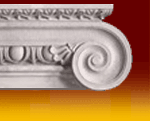Content Standards and Benchmarks:
I,1,4: Explore patterns
(graphic, numeric, etc.) characteristic of families of functions; explore structural patterns within systems of objects, operations
or relations.
III, 2, 2: Locate
and describe objects in terms of their orientation and relative position, including displacement (vectors), phase shift, maxima,
minima, and inflection points; give precise mathematical descriptions of symmetries.
Objective:
After reading the lesson the night before, and hearing my
lecture regarding absolute value equations and inequalities, students will be able to determine what interval of values are
solutions fore absolute value equations and inequalities.
Introduction:
Warm-up: Homework quiz for 3-9
Return Quizzes and go
over the answers
Input:
Ø
Ø Thm Pg 201 For all real numbers x and a with a > 0, ½x½ < a if and only if – a < x < a.
Ø Thm Pg 204 For all real numbers x and a, ½x½ > a if and only if x < – a or x > a.
Ø Definition Pg 203 regarding limit
Ø Know how to graph all solutions to inequalities.
Modeling:
v As I lecture on what the lesson covered, I will do
examples where I find all real solutions to an inequality
Guided Practice:
Students will guide me through the questions they have on the lesson
Independent practice:
v Students will be given Lesson Master 3-9 for extra
practice and they will be assigned the even review for chapter 3.
Closure:
Ø
Review with students what they
need to know about absolute value inequalities : - How to write a range of solutions using inequalities
- How the definition of limit applies to absolute value
- How to graphically represent an absolute value equality

